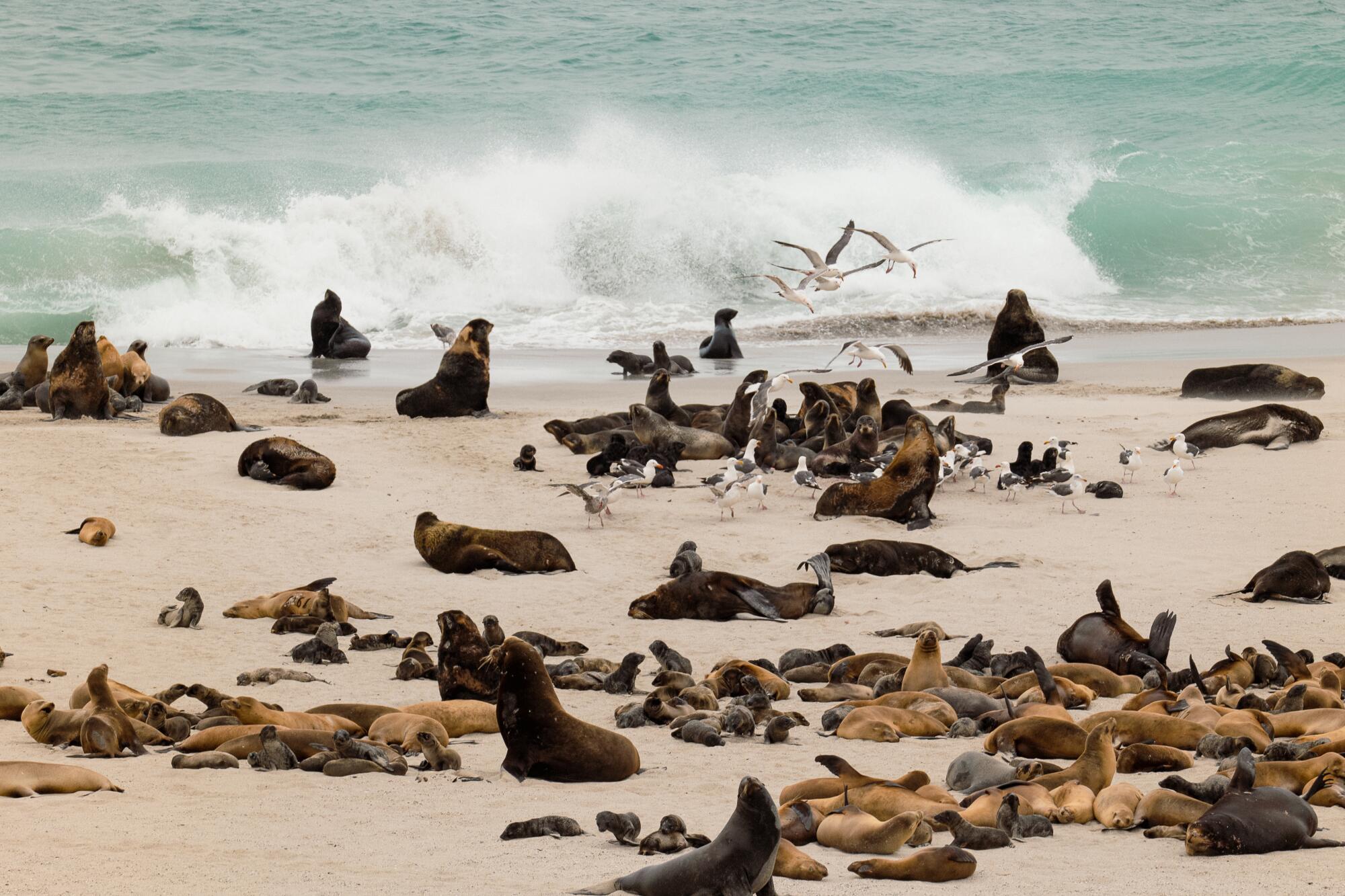
- Share via
Point Bennett is a spit of sand and rock and crumbling cliffs, stretching out about a mile in front of us before trailing into the Pacific Ocean. We lie on our bellies at the lip of a sand dune, looking down at the beach where tens of thousands of seals and sea lions have gathered for mating season — more than anywhere else in the world. Pups nurse from their mothers, scoot across the sand together and slowly learn to swim. The thundering surf is somehow drowned out by the bellows of males of all species, who patrol their territory with constant barks and shouts, confronting others with body-slamming duels and more shouting. The females lay on the beach and look just as exhausted by the bulls as by their pups.
One particularly obnoxious bull lumbers across the beach, climbing over each cow and bellowing to her in turn. “It’s like human males telling you about their podcast,” quips my single friend.
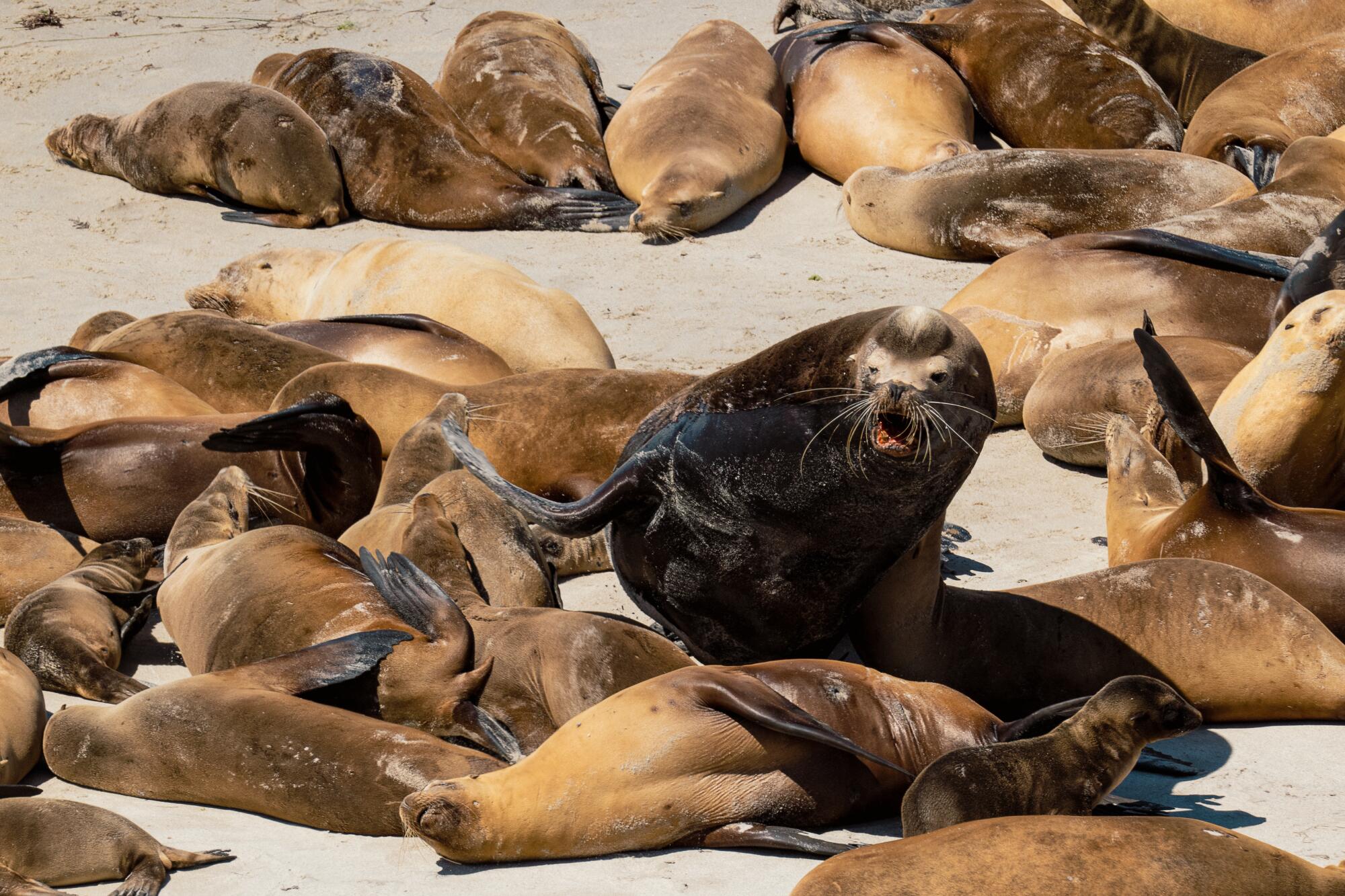
We’re at the far western tip of San Miguel Island, the westernmost and most isolated island of Channel Islands National Park. Fifteen of us campers, the sum total of the island’s visitors, have hiked all eight wind-blown miles across the length of the island to experience the once-in-a-lifetime encounter with the pinnipeds at Point Bennett. The only sign of humanity on the beach is a small hunting blind where researchers from the National Marine Fisheries Service observe the animals. When they see our group, they come to greet us, eager for new company even though we’ll stay only a few hours.
An insider’s travel guide that takes you beyond the mouse ears, selfie spots and Golden Gate Bridge.
They explain the ecological marvel that is San Miguel Island, itself a unique gem among the California Channel Islands, “the Galapagos of North America.” Just offshore from Point Bennett, warm and cold ocean currents collide, pulling nutrient-rich waters up from the depths, nourishing a lush kelp forest and its resident sea life around the island. Seals and sea lions are drawn to the island for its abundance of food and to the beach because it’s so isolated. Although the island’s small size, remote location and frequent strong storms make it unwelcoming to land animals (like us humans), it’s an excellent place for them to safely mate, pup and rear young until they are large enough to brave the open waters.
For those drawn to the wilder side of California, a trip to San Miguel and Point Bennett is a marked contrast from the crowds and amenities at Joshua Tree and Yosemite National Park. The hikes are challenging, and the island has no water and minimal facilities, but with the right preparation, the difficult journey is worth the reward. The 2022 season is fast coming to a close — public boat service to the island ends in mid-November — but services will resume in June. Now is the perfect time to start the planning for a big adventure. Here’s how.
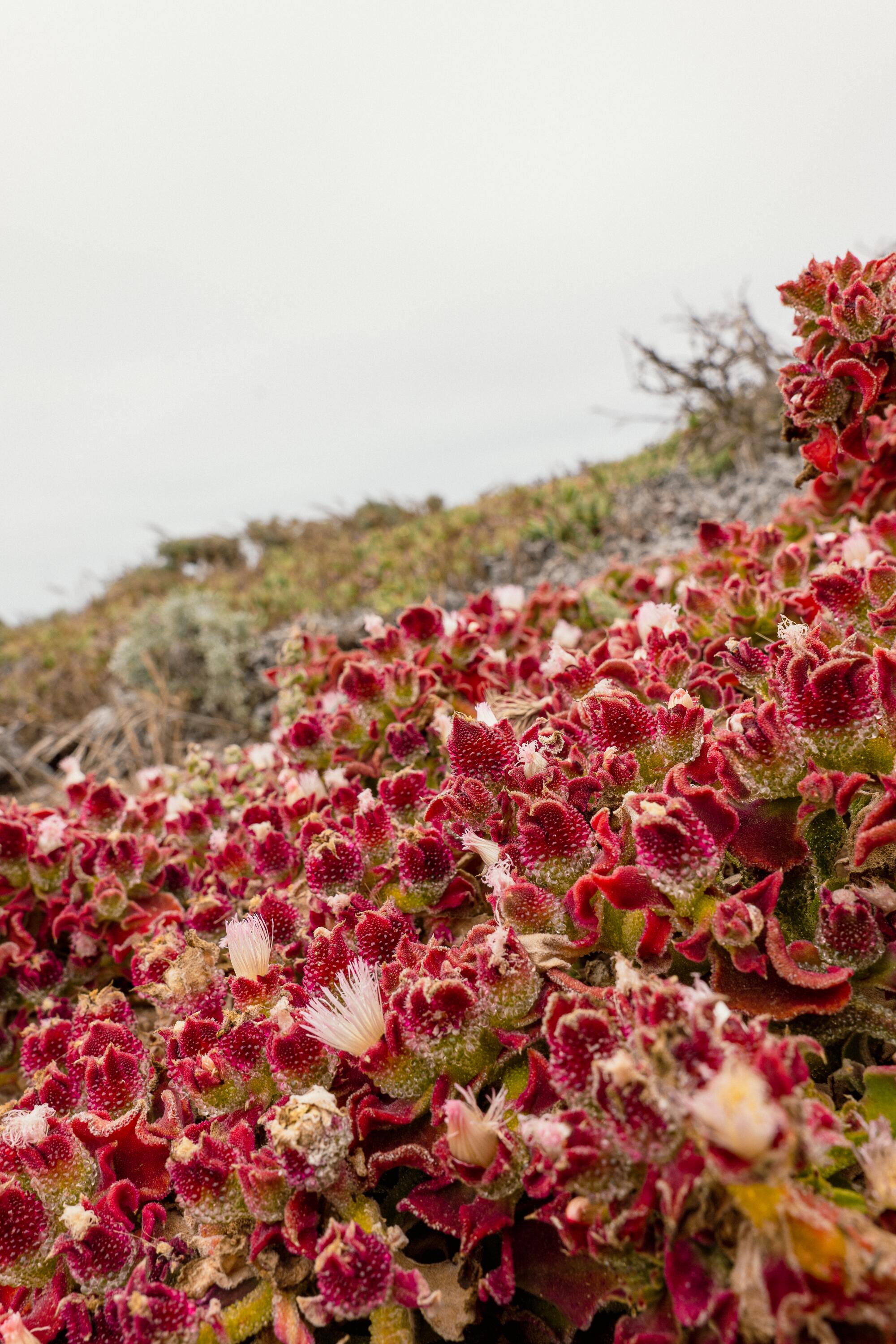
Months in advance
Get your cardio in. San Miguel’s hikes won’t be competing with anything in the Sierra for sheer difficulty. There are only three main hiking routes across the island, totaling 26 miles, and none of them is especially technical. However, you will want to make sure you’re in good hiking shape to enjoy them to the fullest. The island’s winds gust up to 35 mph on a mild day, and have been recorded up to 100 mph, which makes the hikes more tiring than similar ones on the mainland.
In part to protect the island’s fragile ecosystem, and in part to protect visitors from any unexploded ordnance from the island’s years as a Cold War bombing range, any hike outside of the beach and camp must have a ranger chaperone. So if you want to see all the sights, know that you’ll be following a group schedule.
Naturalists speculate that this unique deterrent — the threat of detonation — has contributed to the relatively brisk pace of natural restoration on San Miguel. (Thus far, there have been no efforts to replicate this path to success in other parks.)
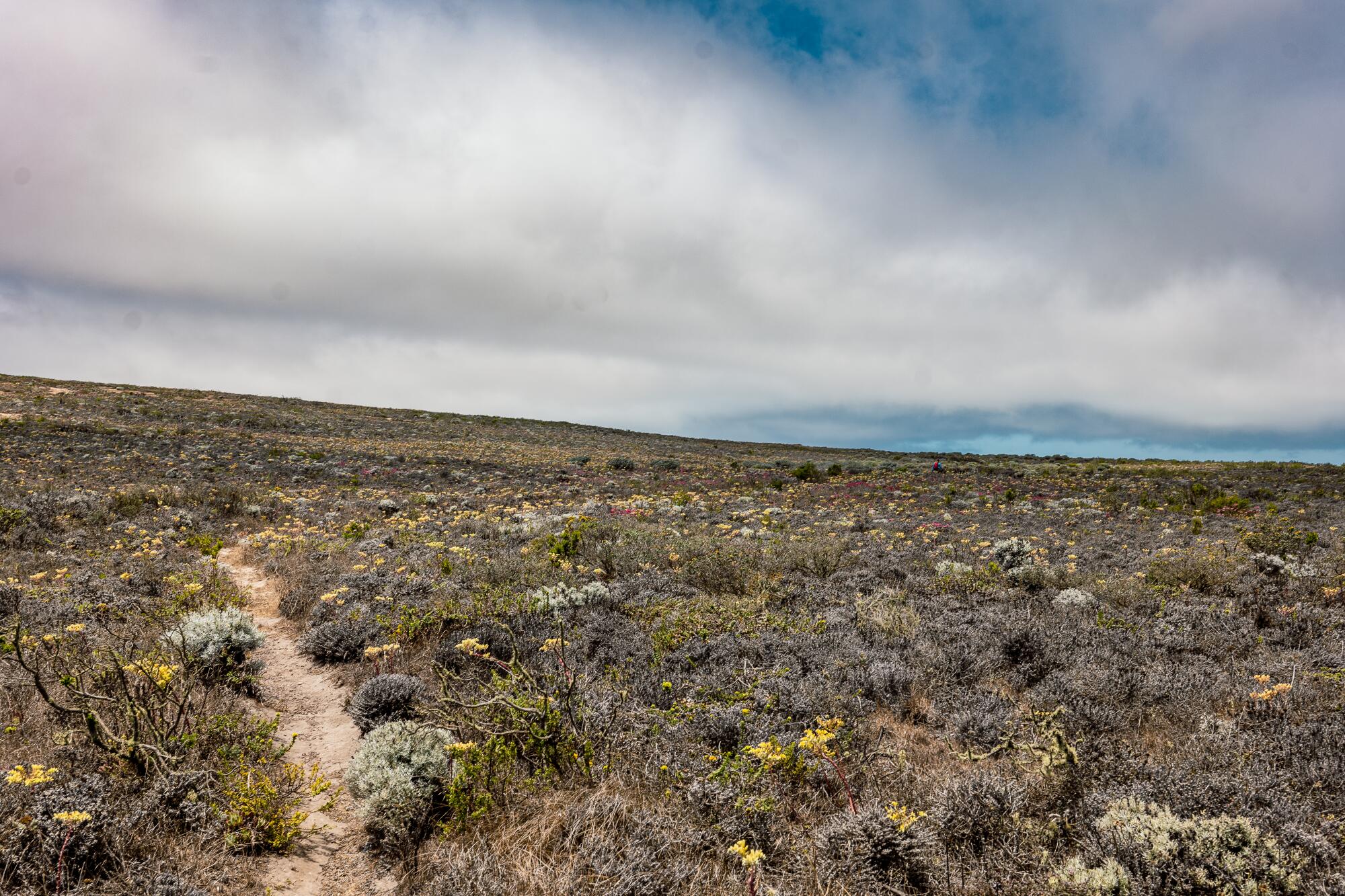
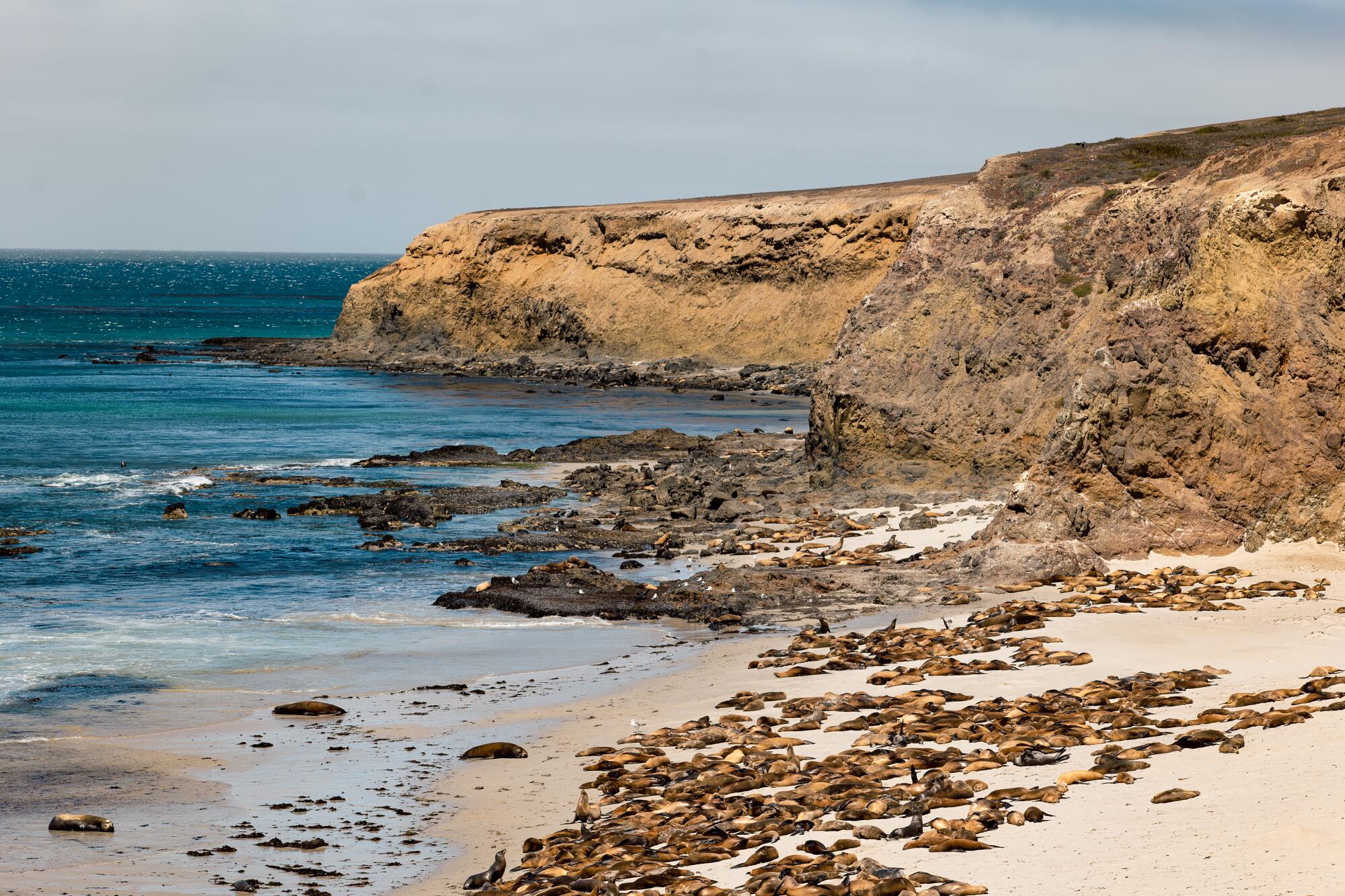
Reserve your campground and your ride. The island’s sole campground can be reserved through Recreation.gov up to six months in advance for a rate of $15 a night. There are only nine campsites on San Miguel Island, with a strict limit of four campers each. Backcountry camping is not allowed on the island.
The majority of visitors reach San Miguel Island via Island Packers, the sole provider of public boat service between the islands and the mainland. Visitors can also arrive on a private boat.
Due to rough seas during the winter and spring, the season to visit San Miguel is short. Island Packers services the island from July to November, and the trip takes about four hours each way. Even in season, boats go to the island only once or twice a week, so your trip will be at least three nights. Book your boat tickets and your campsite at the same time to make sure you don’t run into issues.
Tip: If you can’t get a campsite, try again later. Given the challenges of the trip, cancellations are very common, especially at the last minute.
Packing for your trip
Food and water: There are no supplies on San Miguel Island, so you’ll need to pack in everything you might need for your entire trip. Even in the summer, strong swells or storms may make a boat pickup impossible, so it is recommended you pack food and water for one day more than you will be camping, in case your pickup is delayed. Campfires are not allowed, so bring a camp stove and everything you’ll need to prepare your food.
Water is by far the most challenging aspect of the pack. The average person needs about two liters of water a day at rest, including water from food, and about an additional liter per two hours of hiking. So if you’re planning four days and three nights on San Miguel, that leaves you a baseline of six to eight liters of water, plus more if you’re going to spend your days hiking. That means you’re looking at a base back weight of at least 20 pounds, before any clothes or gear.
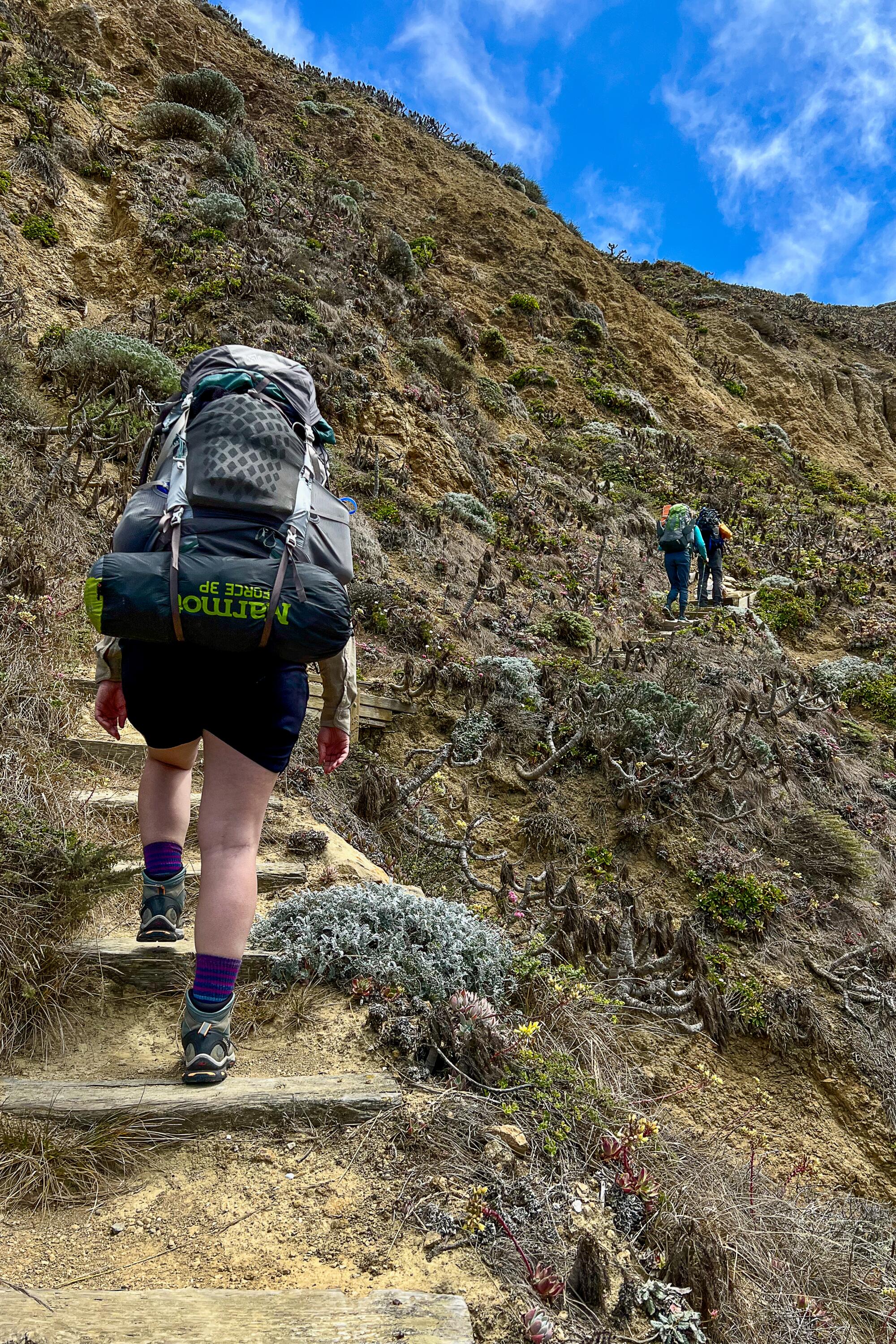
The hike from the beach to the campground is about a mile with 500 feet of elevation gain up Nidever Canyon. The trail is loose and narrow and steep, and ill suited for anything other than backpacking. One bold couple tried to bring a large wheeled cooler, against the advice of the boat crew and rangers, and may no longer be a couple.
Sun and wind protection: I was unprepared for the lack of natural shelter on San Miguel. There are no forests or even trees to speak of, and the short scrubby brush around the camp does not provide much protection.
Here’s what your windburned author will bring next time for protection from the sun and wind:
The winds will easily pull off a sun hat, but a neck gaiter can do double duty for protecting your face and neck from sunburn and blowing sand. Sunblock is essential for exposed skin. Layers are your friend for wind protection, especially with an outer shell, as temperatures can vary throughout the day and across the island. Winds can get very loud at night, so consider bringing a pair of earplugs so you can be well-rested to explore the island.
You also need to consider the winds when planning your camp. Each campsite has a primitive windbreak, consisting of two wooden walls, but a low-profile backpacking tent is still essential. Rangers warn that unoccupied tents have blown clear off the island, so make sure you secure your tent well and leave weight in it when you’re out hiking.
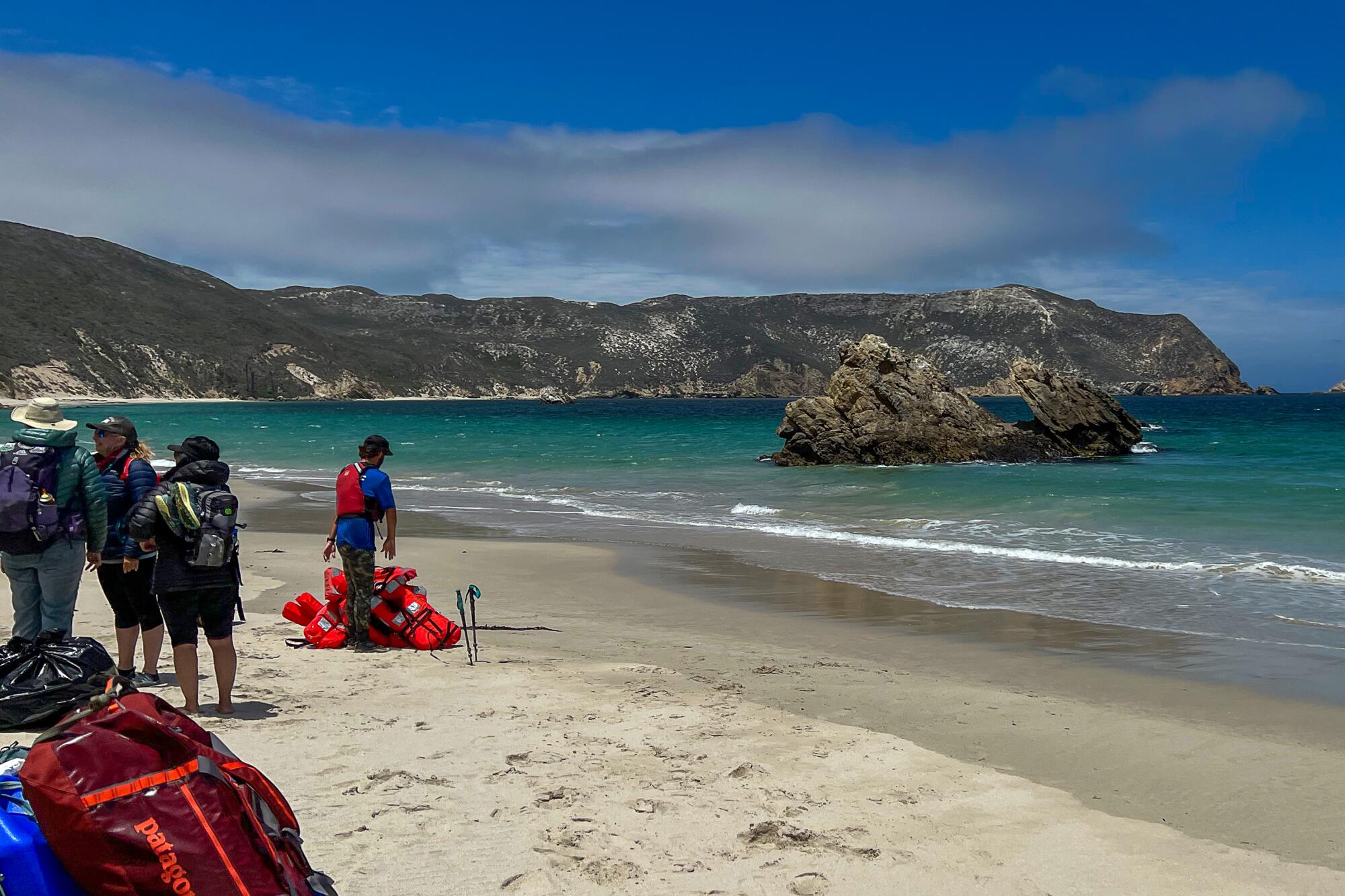
Dry bags and warm clothes: There is no dock on San Miguel Island, so all arrivals and departures are done by a skiff, an inflatable raft with an outboard motor that lands on the sand. Despite the best efforts of the skilled crew, it is quite likely that you will get wet in the process. Wind-blown waves can crest the side of the skiff, and you may have to jump into the surf to get to land. You’ll be happiest if you plan as though you are definitely going to get wet.
Wrap everything inside your pack inside waterproof bags, especially your clothes, cameras and sleeping bags. Bring water shoes or plan to take your boots off for the landing (the beach in Cuyler Harbor is soft and sandy). Have a change of dry clothes in your day bag for the ride home, too. I got hit by a wave on the skiff, and I can promise you the four-hour ride is too long for wearing wet clothes.
Enjoying the island
Hike everything. For most people, a visit to San Miguel Island is a once-in-a-lifetime experience, so try to see and do as much as you are able. Once you and your gear are unloaded from the skiff, you’ll get an orientation from the ranger on duty, and they will outline the schedule of guided hikes for your stay.
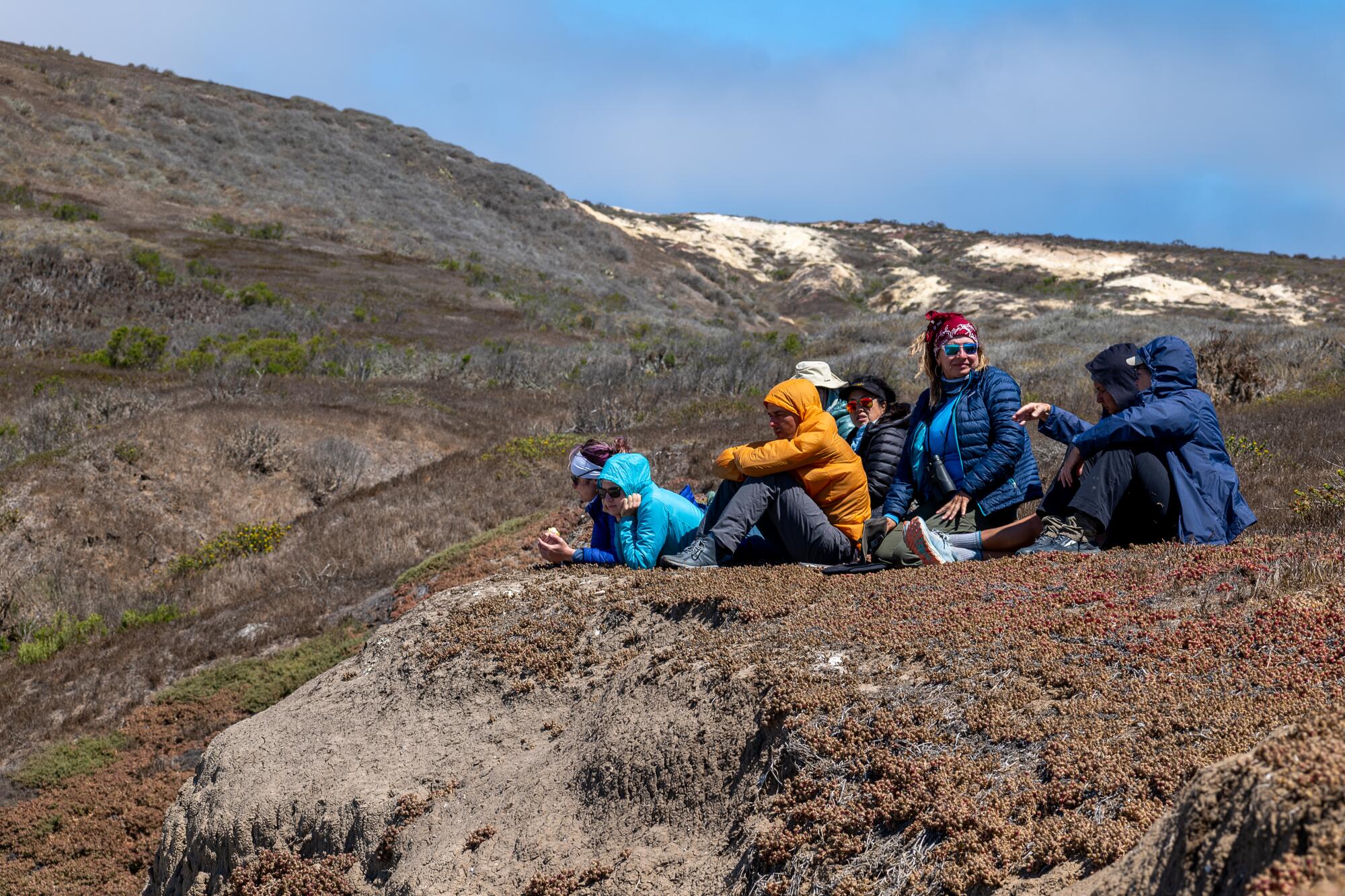
The hike to Point Bennett is about 15 miles roundtrip, and with a stop at the island’s caliche forest — a formation of fossilized tree stumps and roots from an ancient forest. Cardwell Point is six miles round trip, and takes you to a smaller colony of seals and sea lions. There are fewer animals than Point Bennett, but you’ll be able to get much closer views of the animals from the cliffs above the beach. Lester Point is five miles round trip for an impressive view from the northern point of the island across the ocean and harbor, and rare lichens on the rocks.
Keep count of wildlife sightings. The main attraction on San Miguel are the seals and sea lions, who come by the tens of thousands. California sea lions, harbor seals, elephant seals and northern fur seals make up the majority of pinnipeds on the island. Anywhere you are on the island, you are likely to hear the echoing bellows of the bulls on the beaches, and you can witness fights between the male elephant seals, a rough ritual of body slams leading to submission of the loser. But the island also has a few other remarkable animals.
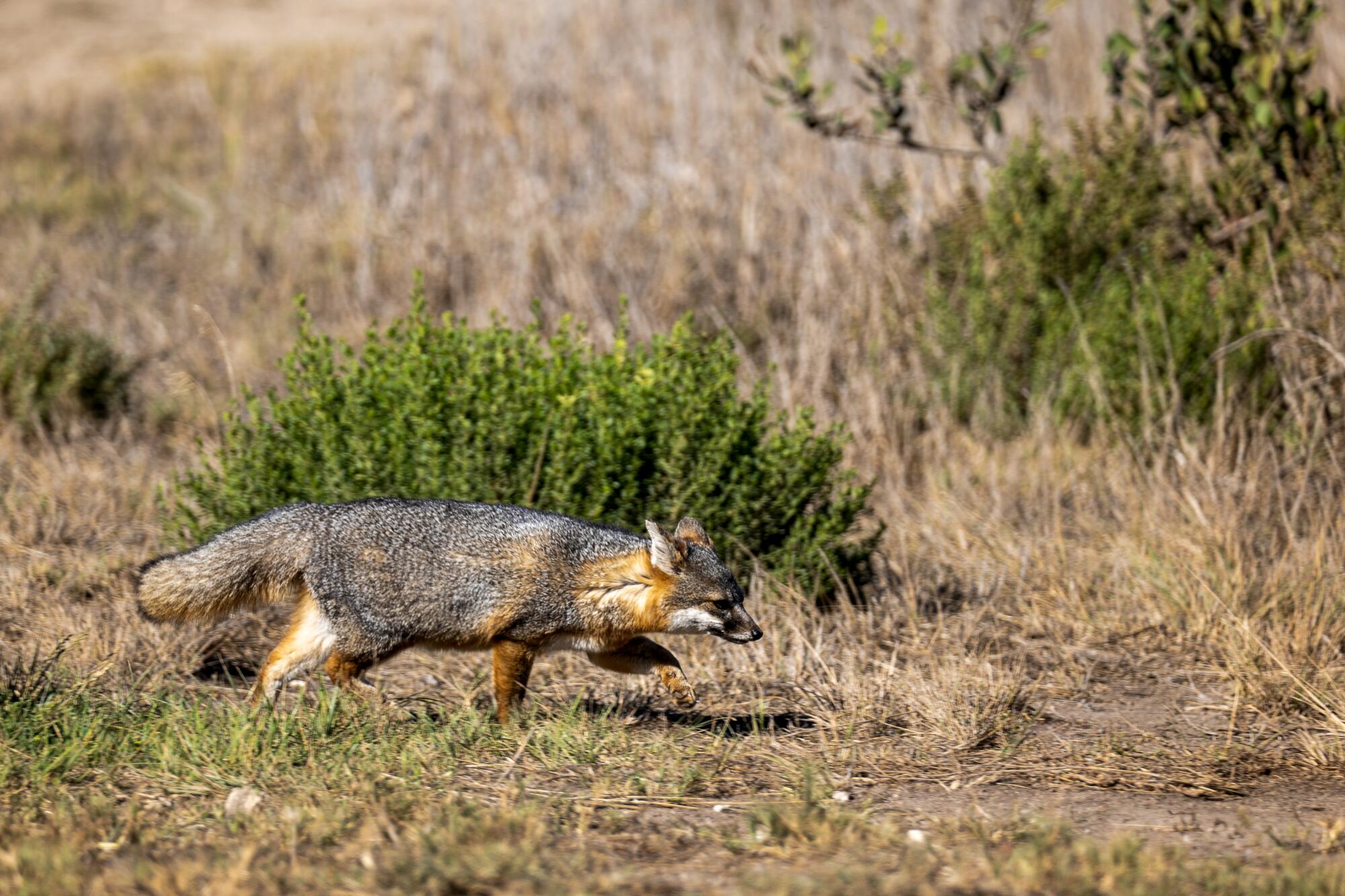
The island fox is a dwarf fox endemic to the Channel islands, and found nowhere on Earth besides the islands off of Southern California. About the size of a housecat, with gray bodies and red ears and bellies, they are adorable, unafraid of humans and frequent campground scavengers. They are smart and tenacious, so every campsite comes with a lock box to protect your food.
Dolphins are commonly seen on the boat ride to and from the Channel Islands, playing in the wake of the boat and leaping from the water. Pelicans, cormorants and gulls are common visitors to the beaches. You may even spot a hummingbird flying among the island’s summer wildflowers.
Enjoy the beach, weather and wildlife permitting. Without a ranger, you are allowed on the beach of Cuyler Harbor, in the campground and on the trails through Nidever Canyon that connect the two. The beach is pristine, with glimmering teal waters, and visitors to the island are permitted to swim, snorkel, kayak and surf. Be warned, ocean sports are subject to conditions and recommended for only the most experienced of athletes. Windy days can create dangerous surf and blowing sand, so have a backup plan if you’re hoping to do any water sports.
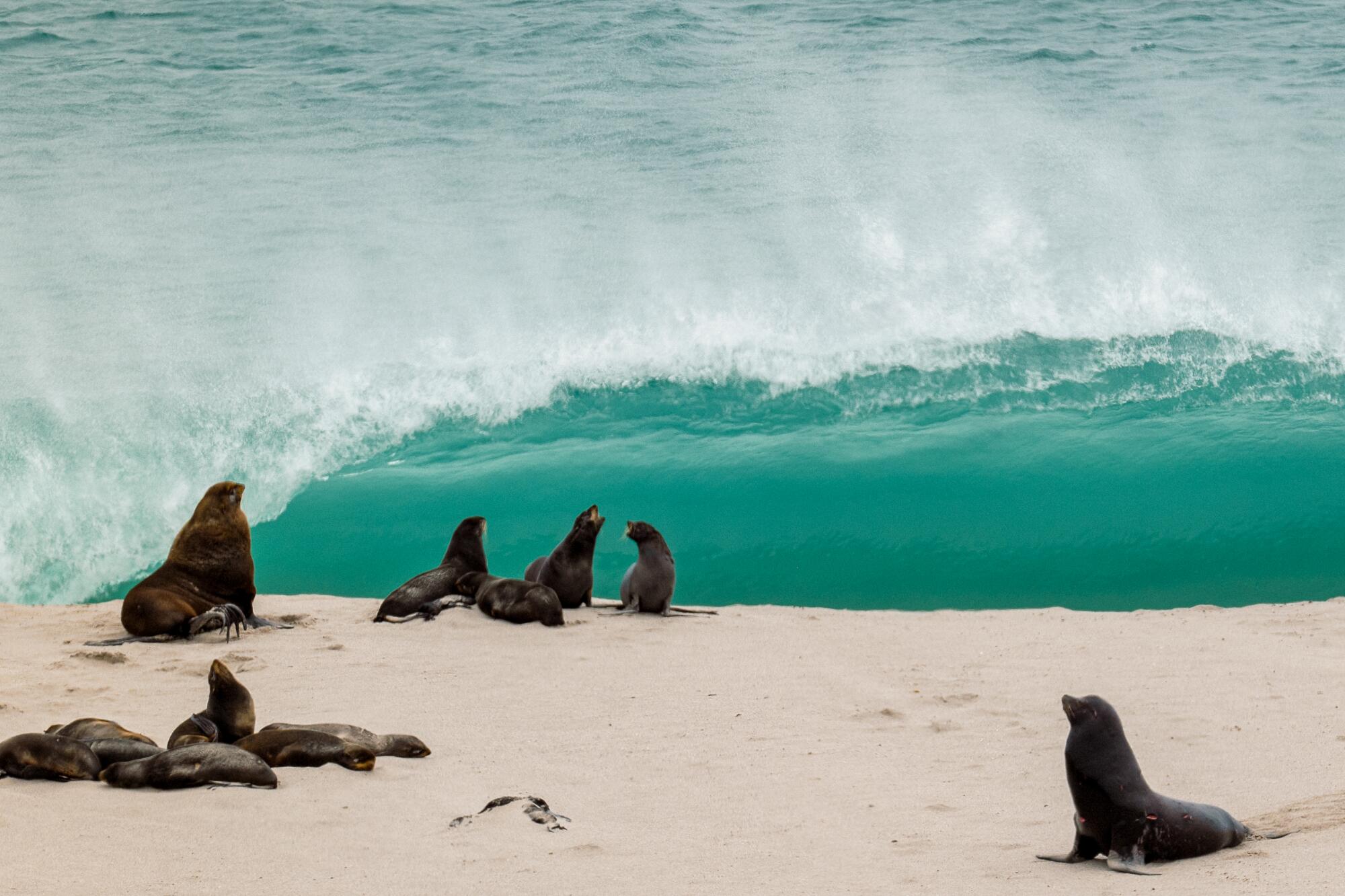
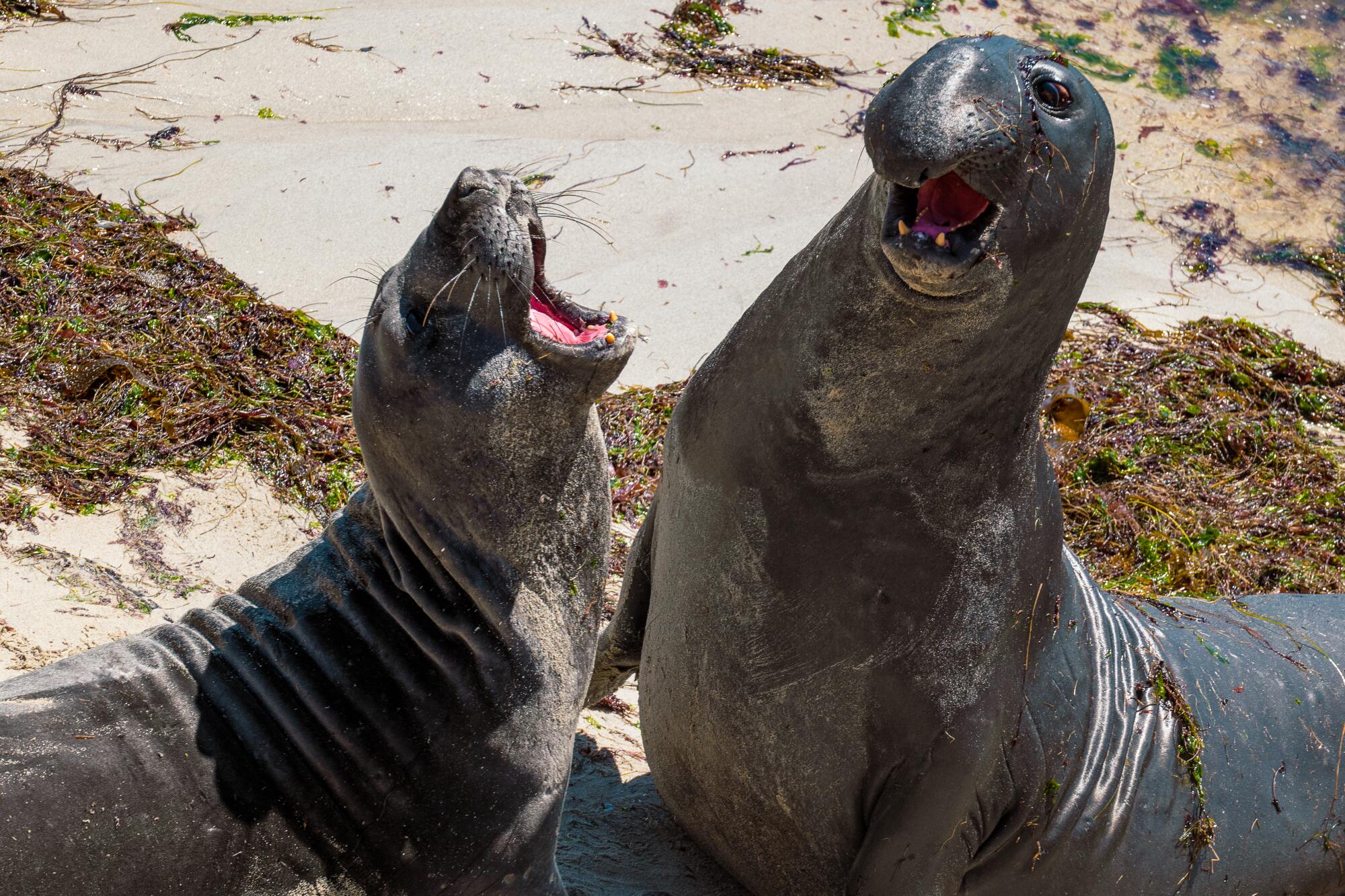
Know that seals and sea lions get priority use of the sand — it’s common to spot sunbathing sea lions or elephant seals burying themselves to stay cool. Remember you’ll be visiting during mating season. Both males and females may be aggressive in defense of their young and territory, and can move with shocking speed even on land. National Parks guidance is that if you’re close enough for an animal to notice your presence, you’re too close.
Get up and see the stars. Thanks to its location in the Pacific, San Miguel is frequently shrouded in clouds and fog, and cloud cover may blow in and out several times throughout a day. Our trip had two damp and cloudy nights, but our last night on the island, I awoke in the night to find it blown over to reveal a truly magnificent night sky, thanks to our distance from light pollution on the mainland.
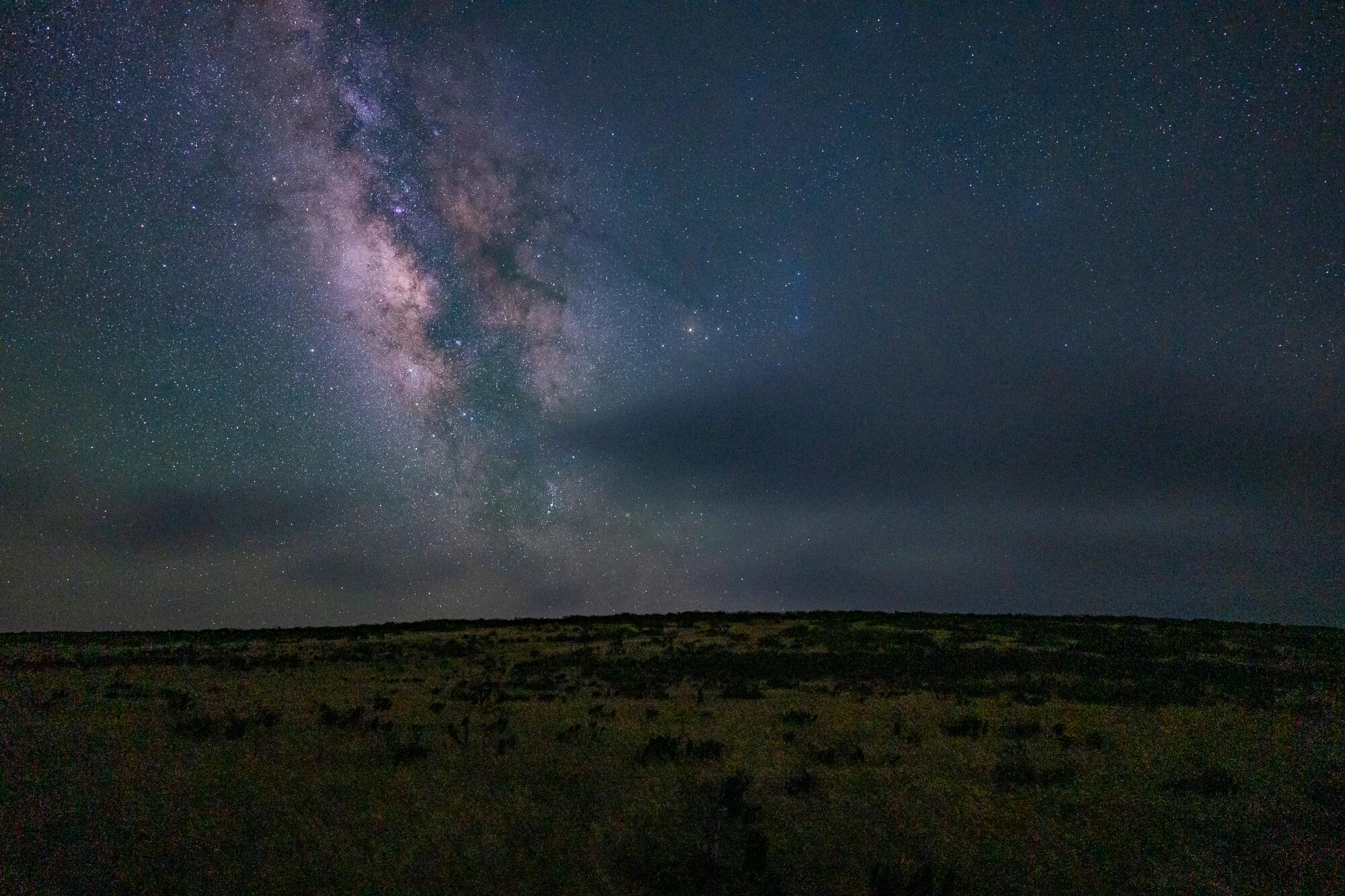
Even better, the Milky Way is best viewed from April to September in the Northern Hemisphere, so your visit to San Miguel will almost certainly be during peak season for seeing the galactic center. If you want to optimize your chances of seeing the Milky Way, plan your trip for the new moon — even a waning crescent casts enough light to wash out your views of the stars. Your eyes will take about 30 minutes without white light to fully adjust to your best night vision, so bring a headlamp with a red light setting to rely on for moving around camp — and cross your fingers for a break in the clouds.
- Share via
Watch L.A. Times Today at 7 p.m. on Spectrum News 1 on Channel 1 or live stream on the Spectrum News App. Palos Verdes Peninsula and Orange County viewers can watch on Cox Systems on channel 99.
More to Read
Sign up for This Evening's Big Stories
Catch up on the day with the 7 biggest L.A. Times stories in your inbox every weekday evening.
You may occasionally receive promotional content from the Los Angeles Times.









